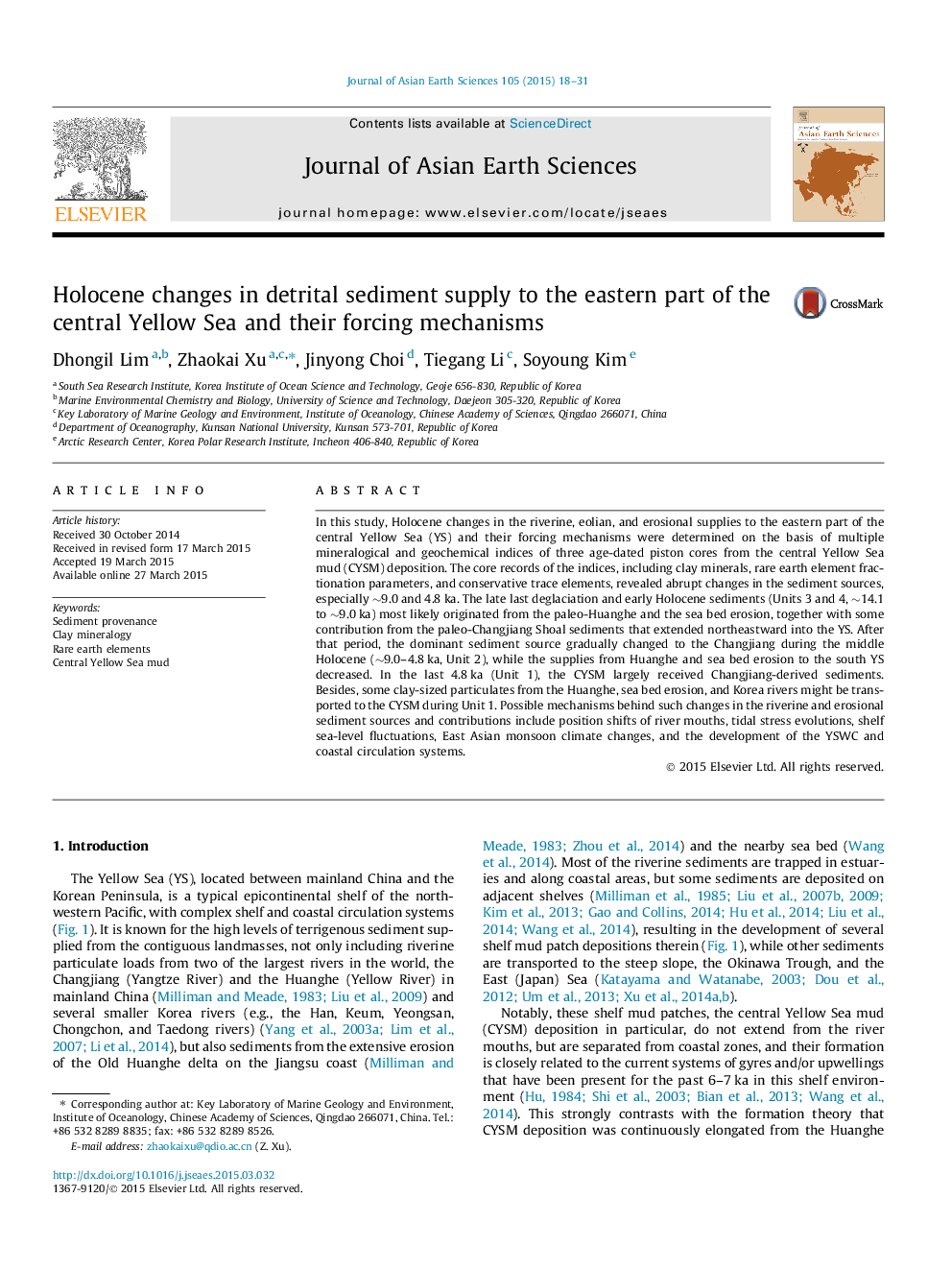| کد مقاله | کد نشریه | سال انتشار | مقاله انگلیسی | نسخه تمام متن |
|---|---|---|---|---|
| 4730483 | 1640364 | 2015 | 14 صفحه PDF | دانلود رایگان |
• 14 ka sediment provenance change in the central Yellow Sea was synthetically studied.
• Geochemical and clay mineralogical indices show obvious fourfold change patterns.
• Estuary location, sea bed erosion, and monsoon controlled deposition at 14.1–4.8 ka.
• The YSWC became the main controller on riverine supply to the CYSM since 4.8 ka.
In this study, Holocene changes in the riverine, eolian, and erosional supplies to the eastern part of the central Yellow Sea (YS) and their forcing mechanisms were determined on the basis of multiple mineralogical and geochemical indices of three age-dated piston cores from the central Yellow Sea mud (CYSM) deposition. The core records of the indices, including clay minerals, rare earth element fractionation parameters, and conservative trace elements, revealed abrupt changes in the sediment sources, especially ∼9.0 and 4.8 ka. The late last deglaciation and early Holocene sediments (Units 3 and 4, ∼14.1 to ∼9.0 ka) most likely originated from the paleo-Huanghe and the sea bed erosion, together with some contribution from the paleo-Changjiang Shoal sediments that extended northeastward into the YS. After that period, the dominant sediment source gradually changed to the Changjiang during the middle Holocene (∼9.0–4.8 ka, Unit 2), while the supplies from Huanghe and sea bed erosion to the south YS decreased. In the last 4.8 ka (Unit 1), the CYSM largely received Changjiang-derived sediments. Besides, some clay-sized particulates from the Huanghe, sea bed erosion, and Korea rivers might be transported to the CYSM during Unit 1. Possible mechanisms behind such changes in the riverine and erosional sediment sources and contributions include position shifts of river mouths, tidal stress evolutions, shelf sea-level fluctuations, East Asian monsoon climate changes, and the development of the YSWC and coastal circulation systems.
Journal: Journal of Asian Earth Sciences - Volume 105, 1 June 2015, Pages 18–31
